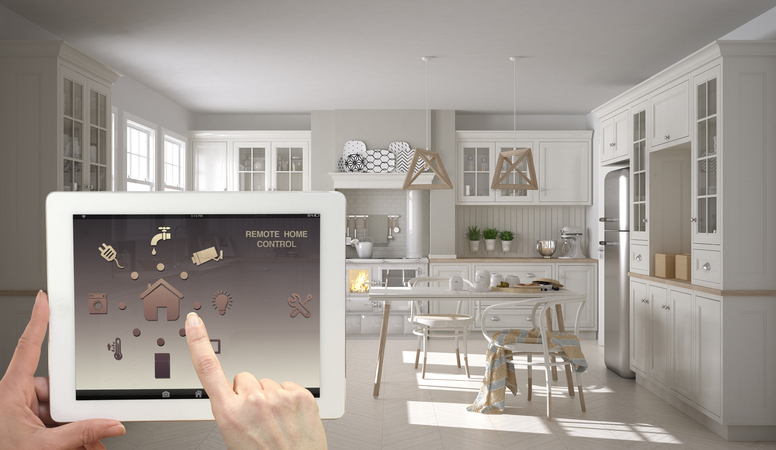The internet of things (IoT) holds great promise for augmenting the hotel experience and helping brands keep guests engaged with products. Indeed, such technological upgrades may be the key to ushering in the next generation of personalization and loyalty programs.
As major chains start to test and roll out their own iterations of IoT-enabled guestrooms, travelers will soon come to demand such seamless integrations from every hotel, no matter the brand. As is always the case, value-adds naturally progress into expectations, following the diffusion of innovations normal distribution with innovators, early adopters, early majority, late majority and laggards – the last one here is definitely where you do not want to be.
In this arms race to constantly stay ahead of the guest expectation curve, smart devices can also act a crucial differentiator between traditional hotels and sharing economy providers, whereby the sole proprietors in the latter camp will very often lack the funds needed to rearrange their lodgings with the latest technologies.
But as a part of this conversation, we must consider all costs associated with IoT implementations, many of which are far outside the capital expenditures allowance for the average hotel.
On a broadest level, each new device a hotel connects to its internal internet network only serves to increase the overall load on that network. Aside from the bring-your-own-device (BYOD) guest contributions of smartphones, laptops, tablets and smartwatches, IoT integrations may potentially enroll numerous other data points from smart TVs, voice-assisted smart speakers, dedicated casting boxes, smart thermostats, in-room air sensors, fire alarms, HVAC, lighting systems, blinds, lock systems, motion sensors, security cameras, minibars and water management systems.
Altogether, a thorough IoT upgrade means that hotels are very likely to also need a systemic upgrade to their back-of-house routers and cabling to support all these new connections and data points. And as most of these IoT devices are connected wirelessly, this can be a heavy strain if a hotel has a limited quantity of wireless access points.
No two hotels are the same in terms of what CapEx will be required, and some of the other more prominent factors include the total number of rooms (obviously), the property’s construction materials (like thick concrete or mostly drywall), its geographic location (think New York City versus an isolated rural area), exceptional throughput requirements, any additional security protocols mandated by the brand and the degree of ‘future proofing’ that senior teams want for their properties. With so many factors at play, it’s very likely that you’ll opt for delaying any renovations in this regard and wait until your budget allows for a whole new network to be set up.
Important to remember that this point is that the average guest does not see or care about what’s required to make all these connections work. All they care about is that the IoT rooms they are paying for are indeed functional and that the WiFi speed on their personal devices is never compromised.
To get a better sense of some of these complexities and lurking variables, I engaged Fred Reeder, President of Nomadix, a company dedicated to supplying best-in-class internet gateway and bandwidth management systems for hotels, to discuss the matter. I first met Fred at HITEC 2017 in Toronto where he shocked me with the meticulous levels to which operators can only control bandwidth allocation to devices during peak periods, and we recently reconnected to continue the conversation.
“Upgrading a network is a complicated endeavor, but in simple terms you need to make the proper investment. A robust, modular, future-proof, best-of-breed network that is transparent to the guest will be required to support the amazing technologies available today and even more exciting technologies on the horizon. If done well, the ROI will be there, sooner than you think.”
With internet connectivity now ranking amongst the most critical guestroom amenities on third-party review websites, this is never something you can compromise. All told, if you are considering an IoT upgrade, it behooves you to work with a qualified service provider to first assess the full scope of both the guest-facing technological costs and all the additional back-of-house expenses necessary to support all these new interconnected devices. As with any other renovation, start slow and cautiously, and be fully prepared for cost overruns.
